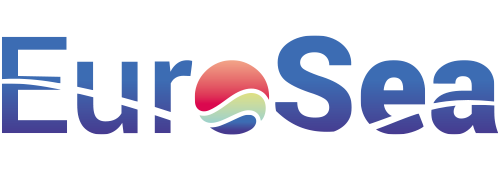
Description
In a significant leap from current methodologies, this initiative ambitiously consolidates diverse marine and oceanographic data that has traditionally been siloed. The collated data, spanning from tide gauges to advanced observatories, is meticulously harmonized to foster interoperability, creating uniform metadata standards and vocabularies. This mammoth undertaking is primarily anchored in a three-fold collaboration with key aggregators: EMODnet, CMEMS, and SeaDataNet.
Impact During the Project
The initiative takes the massive task of integrating diverse and traditionally isolated sets of marine and oceanographic data. This data is brought together and made more interoperable, laying down common standards for metadata and vocabularies.
Measures: The uptake of standardized protocols and best practices within EuroGOOS Task Teams and other international repositories can be assessed by noting the number of references made to the EuroSea recommendations. Contributions to the Ocean Best Practice System (OBPS) by project members or users indicate the project’s influence and usefulness to the wider oceanographic community. Data downloads from the inventories show the direct utilization of integrated datasets. Count of EuroSea datasets that are provided to larger entities like CMEMS and EMODnet, illustrating integration at higher data aggregation levels.
Impact Post Project
The post-project aim is to ensure that the EuroSea-established standards and practices are not just momentarily used but become an industry norm.
Measures: Continuous downloads from the OBPS will indicate the lasting significance and application of the standards and best practices set by EuroSea. The number of downloads from the inventories will demonstrate the sustained demand and relevance of integrated datasets. Citing or referencing EuroSea work in academic and industry papers suggests a long-lasting influence on future research and practices.
Advancement over and above State of the Art
Interoperability: While individual datasets from tide gauges, gliders, or radars might exist separately, the initiative brings them together under a common framework, making the data more accessible and useful across platforms.
Standardization: Setting up common vocabularies and mandatory metadata standards addresses the often-fragmented nature of oceanographic data, making integration easier and more efficient.
Collaborative Ecosystem: Engaging with entities like EuroGOOS, OBPS, CMEMS, and EMODnet ensures that the standards and practices are taken up by larger, influential bodies in the oceanographic community.
Legacy: The post-project measures indicate a goal to create a lasting impact on the field, aiming to make EuroSea’s contributions the new standard for future marine data aggregation and dissemination.
Utility: The number of data downloads serves as a direct indication of the usefulness and demand for the integrated datasets, suggesting a positive reception and real-world application of the project’s output.
In conclusion, through its emphasis on interoperability, standardization, and wide-scale collaboration, the initiative represents a significant advancement over the existing state, transforming the manner in which marine and oceanographic data is aggregated, accessed, and used globally.
Links and References
Link to D3.3 – New tide gauge data flow strategy: https://eurosea.eu/download/eurosea_d3-3_new_tide_gauge_data_flow_strategy_resubmitted/?wpdmdl=5524&refresh=650197c59386c1694603205
Link to D3.15 – Tide gauge metadata catalogue: https://eurosea.eu/download/eurosea_d3-15_tide-gauge-metadata-catalogue/?wpdmdl=5548&refresh=650197c7719991694603207
Link to D3.17 – EuroSea data integration : https://eurosea.eu/download/eurosea_d3-17_eurosea_data_integration/?wpdmdl=5640&refresh=650197c7bd4711694603207
Link to D5.3 – CMEMS downscaled circulation operational forecast system: https://eurosea.eu/download/eurosea_d5-3_cmems_downscaled_circulation_operational_forecast_system_revised_resubmitted/?wpdmdl=5579&refresh=650197c9e6d201694603209
